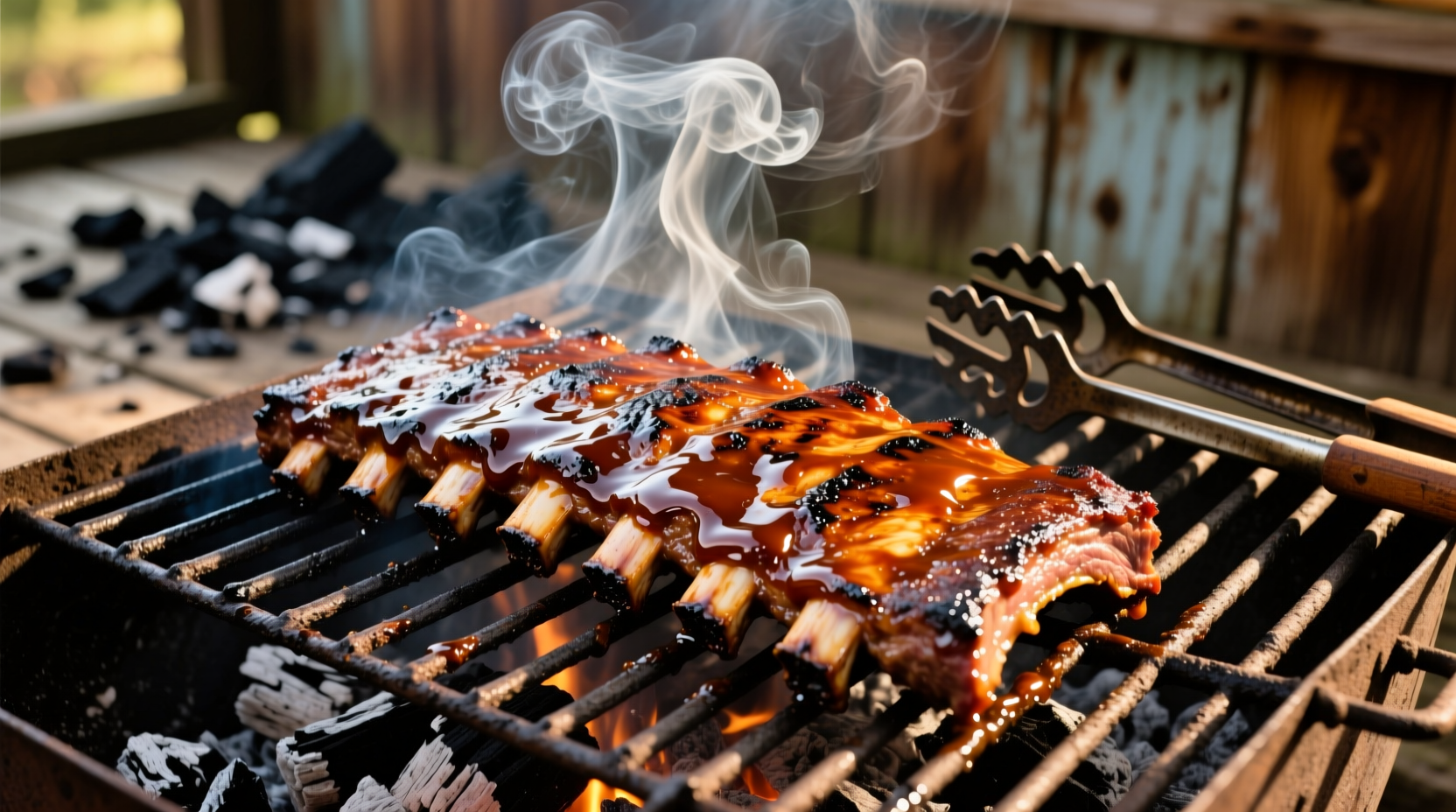Mastering charcoal-grilled ribs separates backyard cooks from true pitmasters. Unlike gas grills, charcoal demands precise temperature control and patience, but delivers unmatched smoky flavor. This guide cuts through conflicting advice to give you science-backed timing strategies that work every time—whether you're using baby backs, spares, or St. Louis cuts.
The Real Factors That Determine Cooking Time
Time alone won't tell you when ribs are done. USDA food safety guidelines confirm pork becomes safe at 145°F, but USDA Food Safety and Inspection Service notes that connective tissue breakdown for tender ribs requires 195-205°F. Your actual cooking duration depends on three critical variables:
- Rib type: Baby backs cook faster due to smaller size
- Grill temperature stability: Fluctuations add hours
- Desired tenderness: Fall-off-the-bone vs. chew-with-character
| Rib Type | Weight Range | Typical Time | Internal Temp |
|---|---|---|---|
| Baby Back | 1.5-2.5 lbs | 3-4 hours | 195-203°F |
| Spare Ribs | 2.5-3.5 lbs | 4-6 hours | 198-205°F |
| St. Louis Cut | 2-3 lbs | 3.5-5 hours | 195-203°F |
Preparation: Why 20 Minutes Now Saves Hours Later
Proper rib prep prevents common timing disasters. Remove the membrane from spare ribs—this translucent layer blocks smoke penetration and causes uneven cooking. Season generously with coarse salt and black pepper at least 1 hour before grilling; this allows flavors to penetrate while drawing out excess moisture for better bark formation.

Charcoal Setup: The Temperature Sweet Spot
Consistent 225-250°F is the magic range for charcoal ribs. Build a two-zone fire with all charcoal on one side. Use the Kansas City Barbeque Society's recommended coal arrangement: fill one chimney starter (80-100 briquettes) for a standard kettle grill. Position ribs meat-side up over the empty side, maintaining 2°-5°F variance with a quality thermometer.
Phase-by-Phase Cooking Timeline
Follow this temperature-based timeline rather than fixed hours. The 3-2-1 method (3 hours smoke, 2 wrapped, 1 sauced) works well for spares but often overcooks baby backs:
- Smoke Phase (160-170°F internal): 1.5-2 hours for baby backs, 2-3 for spares. Add wood chunks now for maximum smoke absorption.
- Wrap Phase (170-190°F internal): Double-wrap in foil with 1/4 cup liquid. This accelerates collagen breakdown without drying.
- Finish Phase (195°F+ internal): Unwrap and return to grill. Apply sauce only during last 30 minutes to prevent burning.
Doneness Tests That Beat the Clock
When internal temperature hits 195°F, perform these checks before removing ribs:
- Bend Test: Lift rack with tongs—it should bend 45 degrees with cracks forming on surface
- Probe Test: Meat thermometer should slide in with almost no resistance
- Meat Retraction: Bones should protrude 1/4-1/2 inch from ends
Troubleshooting Timing Issues
When ribs cook slower or faster than expected:
- Too slow: Add 5-10 fresh coals every 45 minutes. Check for air vent blockages.
- Too fast: Close top vents partially. Move ribs farther from heat source.
- Uneven cooking: Rotate rack 180 degrees hourly for consistent exposure
Remember that environmental factors significantly impact timing. According to University of Illinois Extension research, cooking times increase 15-20% in temperatures below 50°F or above 90°F due to heat loss or accelerated cooking.
Critical Resting Step
Never skip the 15-20 minute rest after removing ribs from the grill. This allows juices to redistribute throughout the meat. Wrap loosely in foil and place in an empty cooler if holding longer—this technique maintains perfect serving temperature for up to 1 hour.











 浙公网安备
33010002000092号
浙公网安备
33010002000092号 浙B2-20120091-4
浙B2-20120091-4